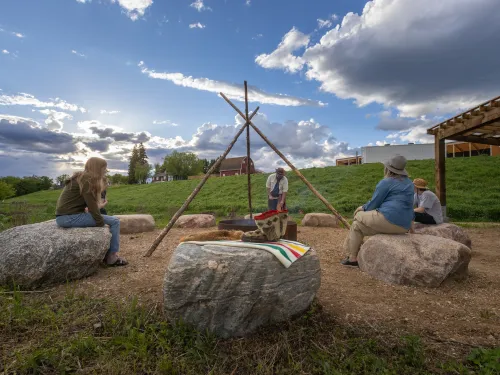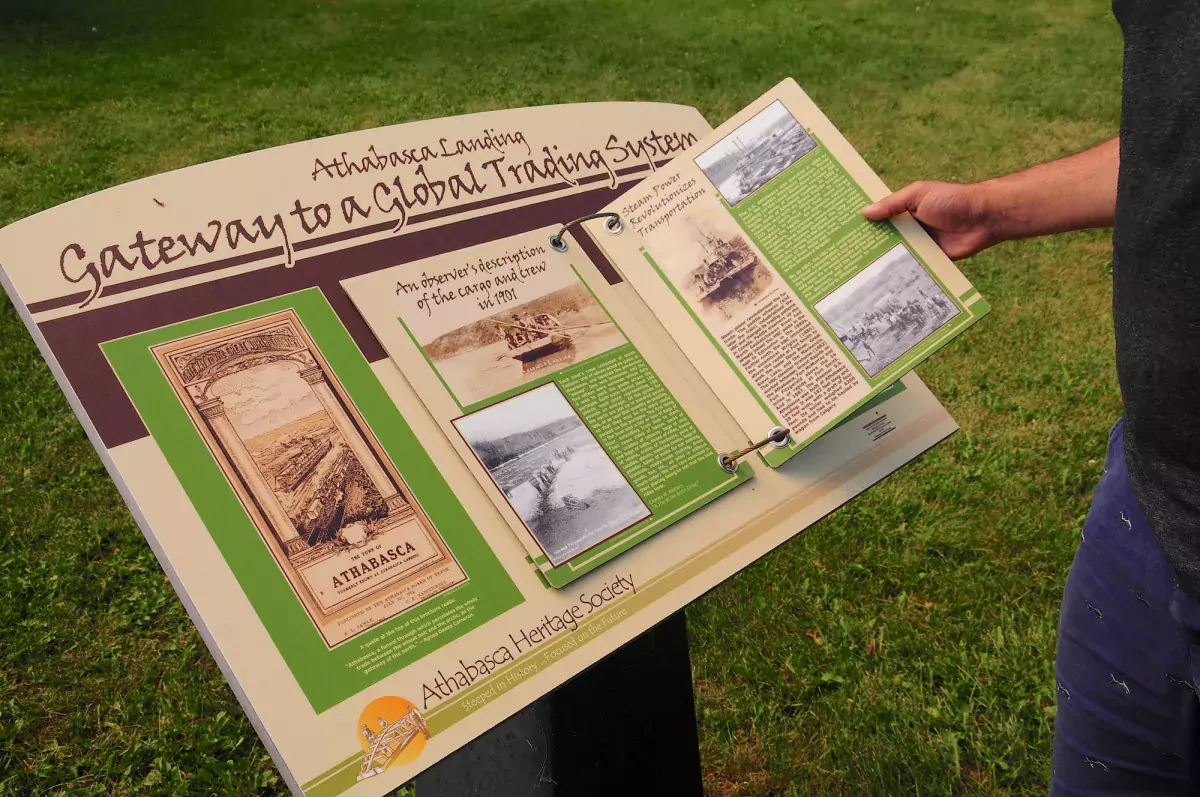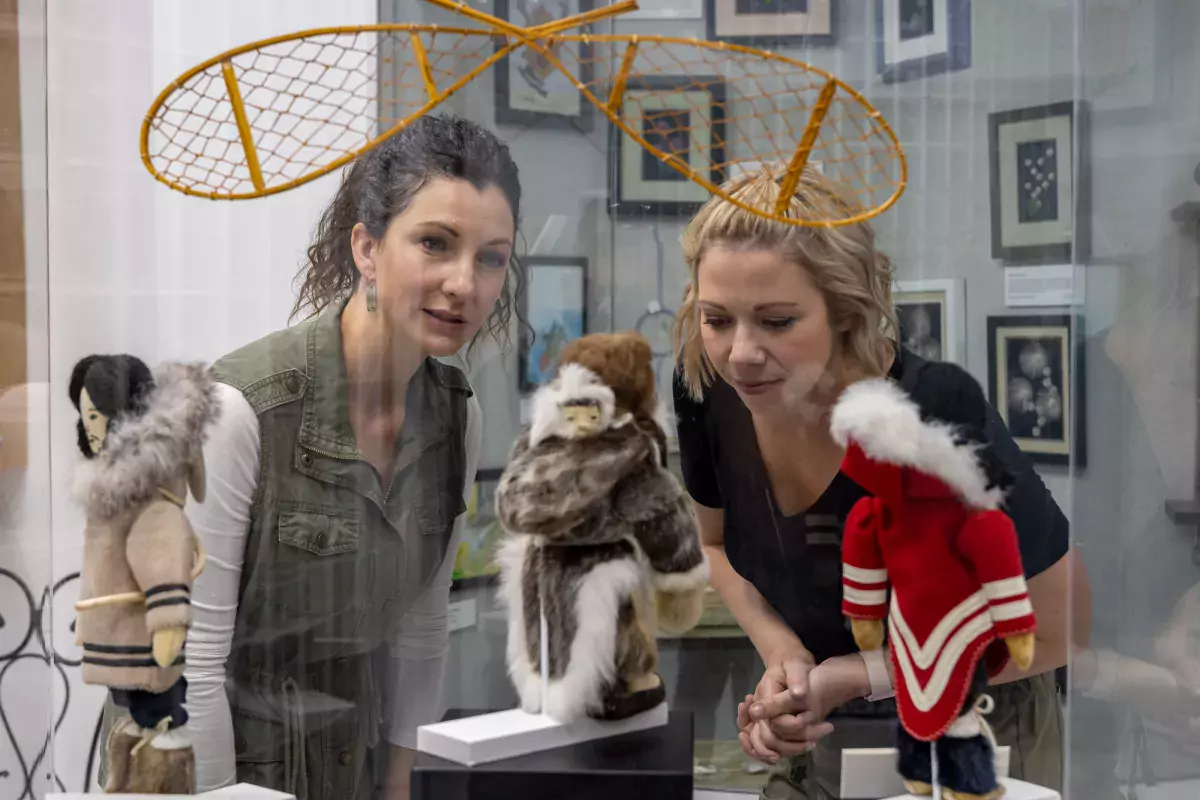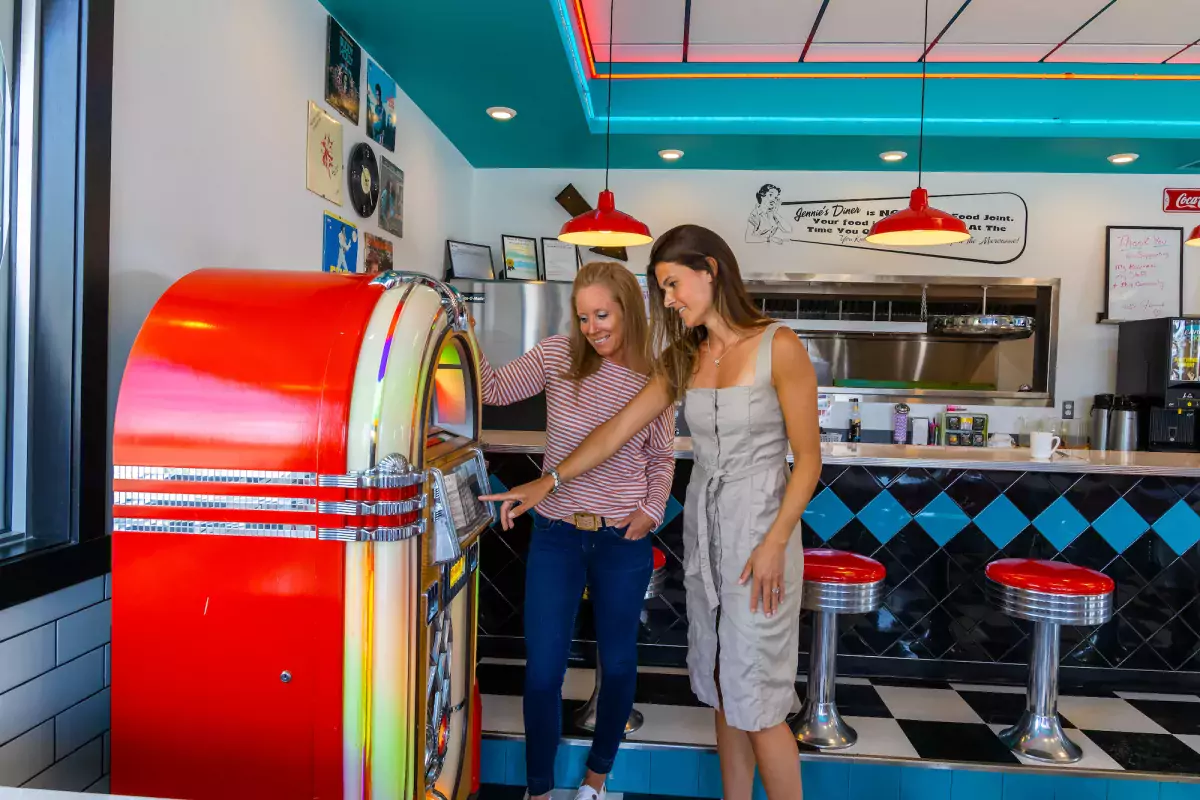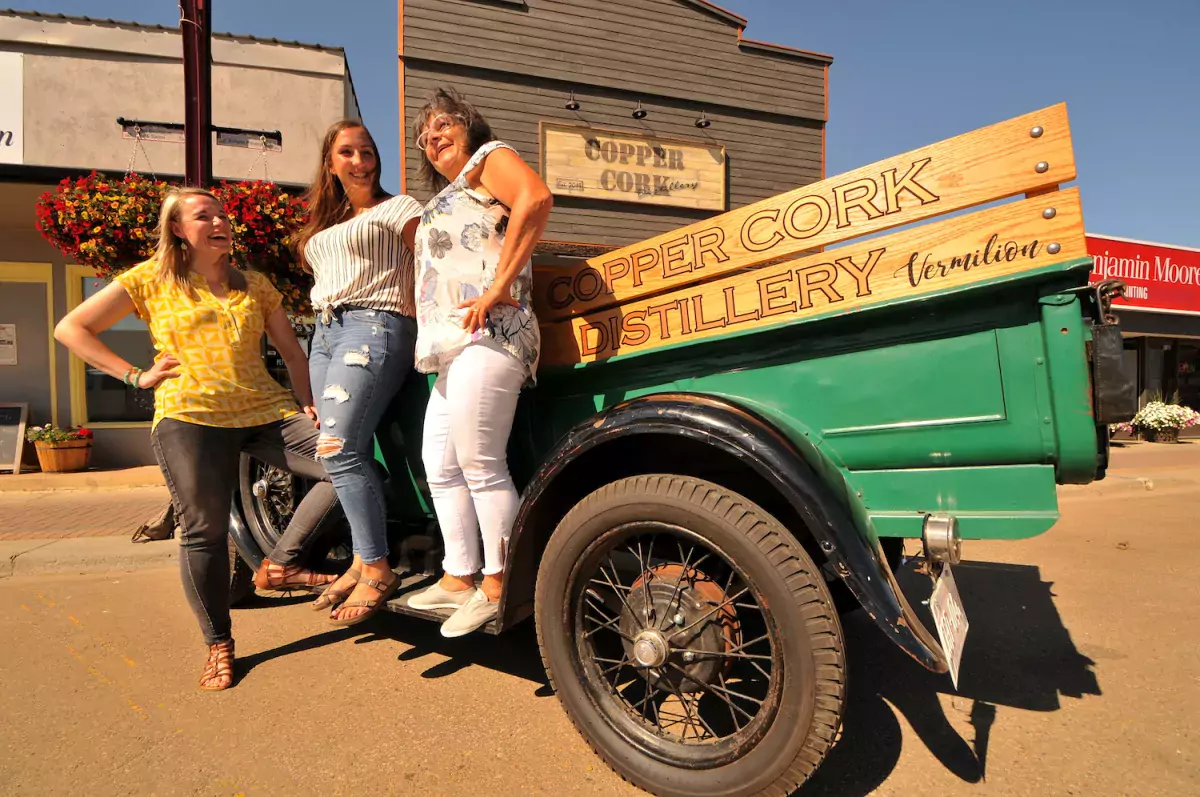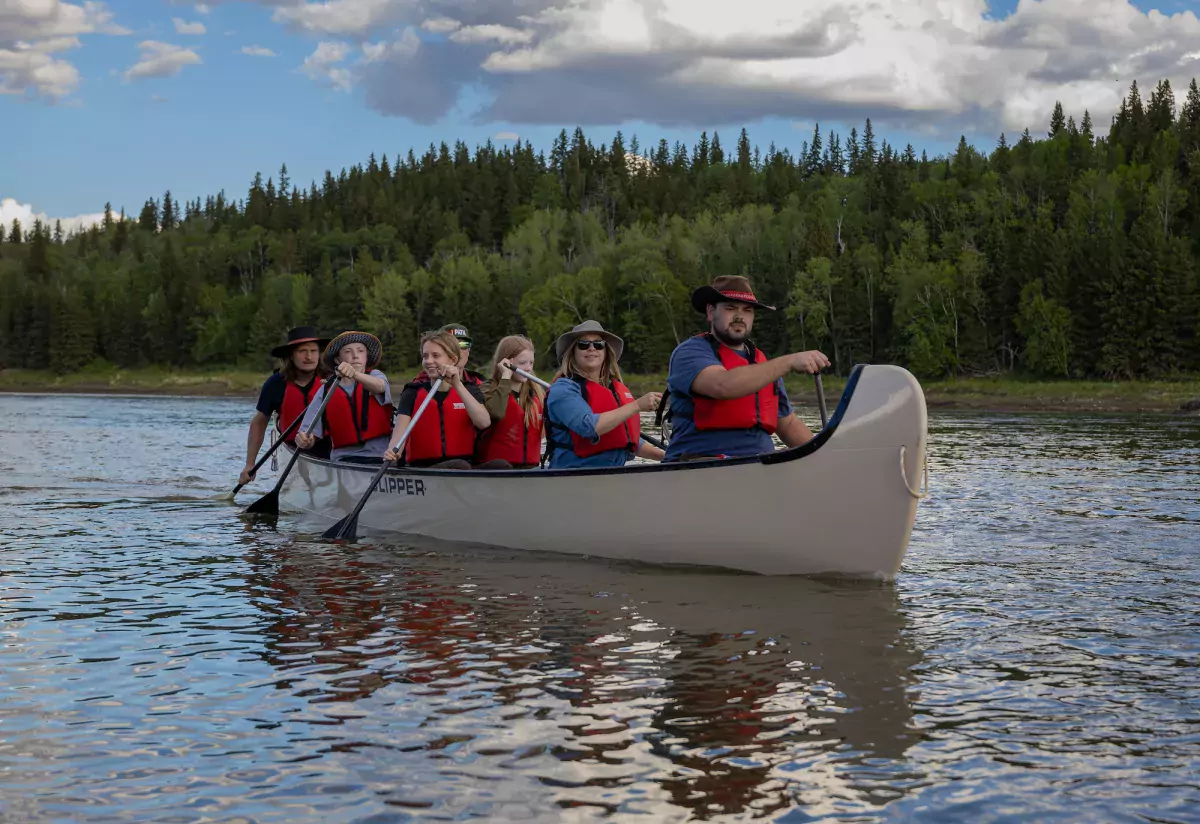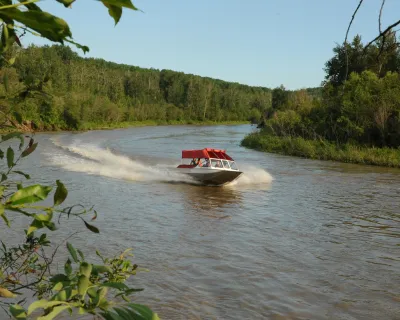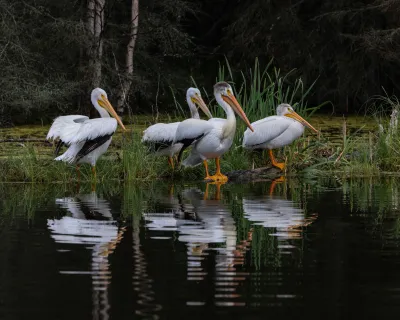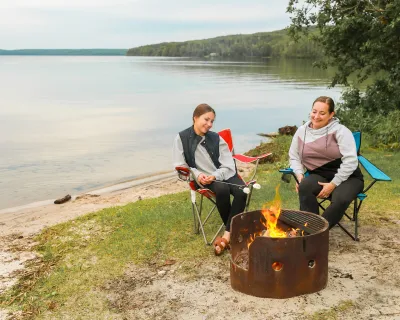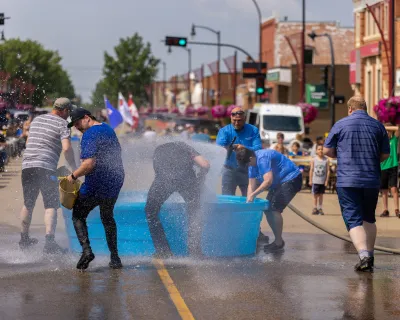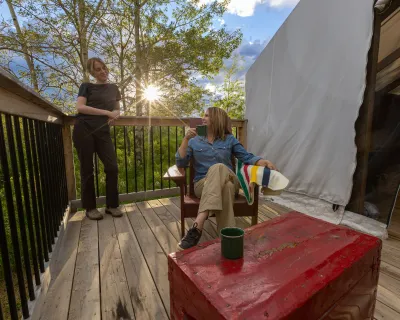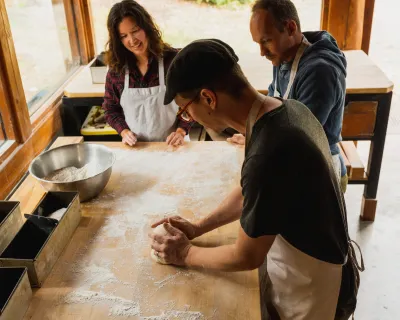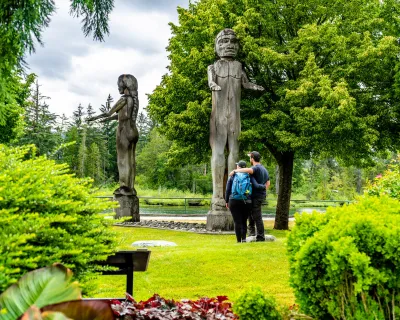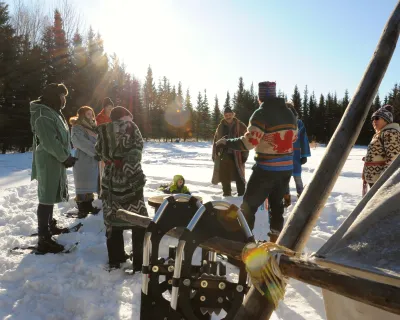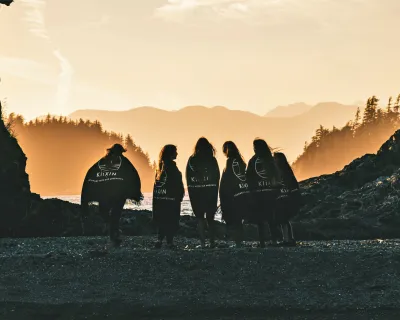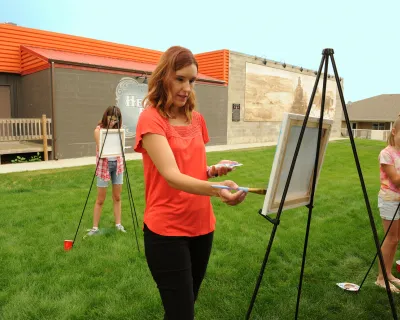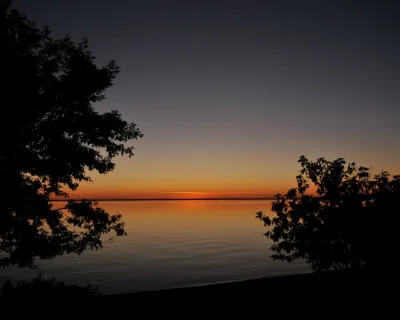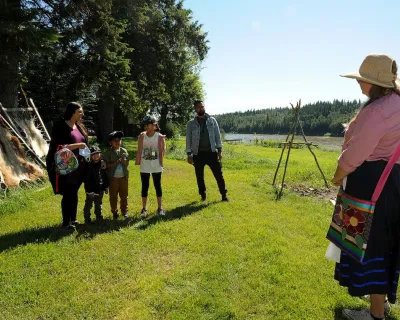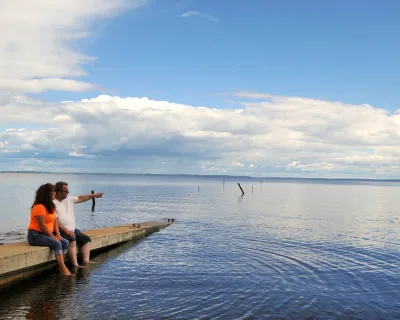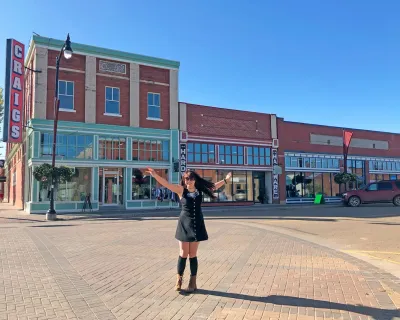Road trip through history in northeast Alberta
#TakeItToTheLake #NEAB
Fall road trips through Alberta are some of the best. Seasonally, September and October often bring warm days, cool nights, colourful landscapes and fewer crowds. Tie in history experiences and venues that bring to life early Indigenous and Métis heritage, fur trading history, French, Russian Orthodox and English settler past, Olympic connections and breathtaking natural beauty, and you’ve got an epic trip ahead.
This is your ticket into Alberta’s past: a road trip through northeast Alberta, connecting Athabasca, Lac La Biche, Bonnyville/Cold Lake, Vermilion and Métis Crossing.
Here’s a tour of the history you’ll uncover when you head for northeast Alberta.
Road trip through northeast Alberta’s history
Short drives between destinations full of history, beautiful boreal forest, lakes and scenic prairie make the #NEAB road trip an easy win for the eyes and the road legs. With one of the leading Indigenous heritage sites in Canada at Métis Crossing as an anchor destination, this trip has some serious street cred for you history buffs.
Approximate driving times/distances
To make the most efficient loops, you can start by going north, and work your way east, then south; or, go in reverse order, starting southeast and working your way north and west.
- Edmonton to Athabasca: 150km, 1h45m
- Athabasca to Lac La Biche: 96km, 1h
- Lac La Biche to Bonnyville/Cold Lake: 148km, 1.5h
- Bonnyville/Cold Lake to Vermilion: 166km, 1h50m
- Vermilion to Métis Crossing: 161km, 1.5h
- Métis Crossing to Edmonton: 114km, 1h20m
Back to front or front to back, you can see that the driving distances are short and the payoffs are big.
So let’s hit the road! Here’s a northeast Alberta history road trip itinerary to keep you flowing through the stream of time as you go.
Day 1: Athabasca
Athabasca brims with history. Did you know it was in the running to be Alberta’s capital, way back in 1905? But for a bend in the railroad...
The real story of Athabasca is those hardy “river rats,” the early days of trading, and the under-heralded history of Amber Valley.
For a living history experience that’s hard to match, get out on the river with Grand Rapids Wilderness Adventures or Paddle Ur Way Adventures (depending on your own level of adventure). This is where the river rats plied their trade. A cruise down river will give you a true appreciation for your northern setting, and the region’s natural character - which defines much of its history as well.
When you get off the river, take a walking history tour of town, then head to Amber Valley, one of the largest Black settlements to exist in Canada in the early 1900s, before continuing on to Lac La Biche, just under an hour away.
Day 2: Lac La Biche
Lac La Biche is a crossroads for many cultures, and all have left their mark on the land here. Come appreciate the complexity of the past and see how it informs the present, through history, the arts and the outdoors.
You can choose from among a range of historic venues and arts experiences to enrich your stay - each with its own distinct offerings and appeal.
Museums and cultural sites
- Lac La Biche Museum
- Lac La Biche Mission
- Plamondon & District Museum
Indigenous arts & culture
- Portage College Museum of Aboriginal Peoples’ Art & Artifacts (featuring the Indigenous Group of Seven)
- Nehiyawaskiy Indigenous Peoples Art Co-op
- Indigenous Spirit Creations at Lac La Biche Canadian Native Friendship Centre
Considering how many historic and cultural resources there are to uncover here, you may want to extend your stay an extra day. For a cultural immersion experience that will tie it all together, head to Hideaway Adventure Grounds, where you can stay in a trappers tent (in any season) and engage in Métis cultural experiences.
When you’re ready, head on to Bonnyville, an hour and a half east of Lac La Biche.
Day 3: Bonnyville
Bonnyville is farm and lake land, where you’ll find rural friendliness around every corner. With farming being such a big part of the region, if you happen to be in Bonnyville on a Saturday, make a visit to the Farmer's Market between 11am - 2pm at Bonnyville Centennial Centre, hosted by the Bonnyville Agricultural Society, to connect to the region’s agricultural roots.
Then travel up through time to capture the feel of the 50s, with a coffee and bite at Jennie’s Diner to soak in its retro vibes. (The cupcakes are fabulous, and be sure to play a tune on the jukebox!) In season, you might also catch a Bonnyville Gear Grabbers event, for vintage car enthusiasts.
Continue your time travel into the present, at modern day Journey North Cidery, where the innovative team is building a new agricultural “farm to glass” experience, as they grow their own orchard on site. The sunset views here pair perfectly with a glass of one of their signature ciders and a charcuterie board.
Day 4: Vermilion
Nearly razed by fire in the early 1900s, the town managed to save some of its most iconic buildings. Today, those buildings are part of what gives downtown Vermilion its character.
Start with the Vermilion Heritage Museum and the Agricultural Society to get your bearings on the early life of the community. (Well, you may actually want to start with some baked goodies and coffee at Red Brick, but that’s up to you.)
Then, tour some of the town’s historic architecture. Make a visit to the former Vermilion Standard News building (now Burnt Rock Adventure Co.) and be sure to see another prime historic landmark at Vermilion Provincial Park, the Beckie Scott Nordic Centre.
Set in a restored and relocated CN Rail Station clubhouse and named after local Olympic athlete Beckie Scott, the clubhouse is a Nordic mecca set within river valley parkland right on Vermilion’s back doorstep. You never know who you might run into on the trails there, or what stories they might tell.
For a literal taste of history, pop in to Old School Cheesery when you’re through. Alberta’s first economusee serves up artisan cheese inspired by the old world but made fresh at their farm site just minutes away from town. (You can continue the culinary adventure even after you’ve returned home, with the Cheesery’s “cheese journey” - a sampling of their cheeses delivered straight to your door.)
Lastly, make the 1.5 hour drive up to Métis Crossing for a final day (or two) of cultural experiences at Alberta’s premiere Métis heritage site.
Day 5: Métis Crossing
Meet bison, learn about life as a Métis trapper, paddle a voyageur canoe, learn Indigenous crafts and see what life was like on a Métis settlement in the late 1800s and early 1900s.
Established on the original site of the Victoria Métis Settlement, Métis Crossing combines the comforts of the new world—with a stay at the Lodge (opened in 2022)—and traditions that span centuries. With its signature experiences, preserved heritage site and cultural gatherings, you can tailor your experience here to fit one day, two or more.
Along your travels, you’ll appreciate just how much Alberta’s history is informing the present. With an emphasis on Indigenous heritage, these historic sites and experiences offer a way to learn history from the peoples and cultures who were here on the land for thousands of years and remain here today.
From past to present, walk the path of reconciliation as you enjoy a fall road trip through historic northeast Alberta.
More #NEAB road trip inspiration
Want to get some time outdoors? Get on the land? Check out more things to do in northeast Alberta.
Like Our Facebook Page
